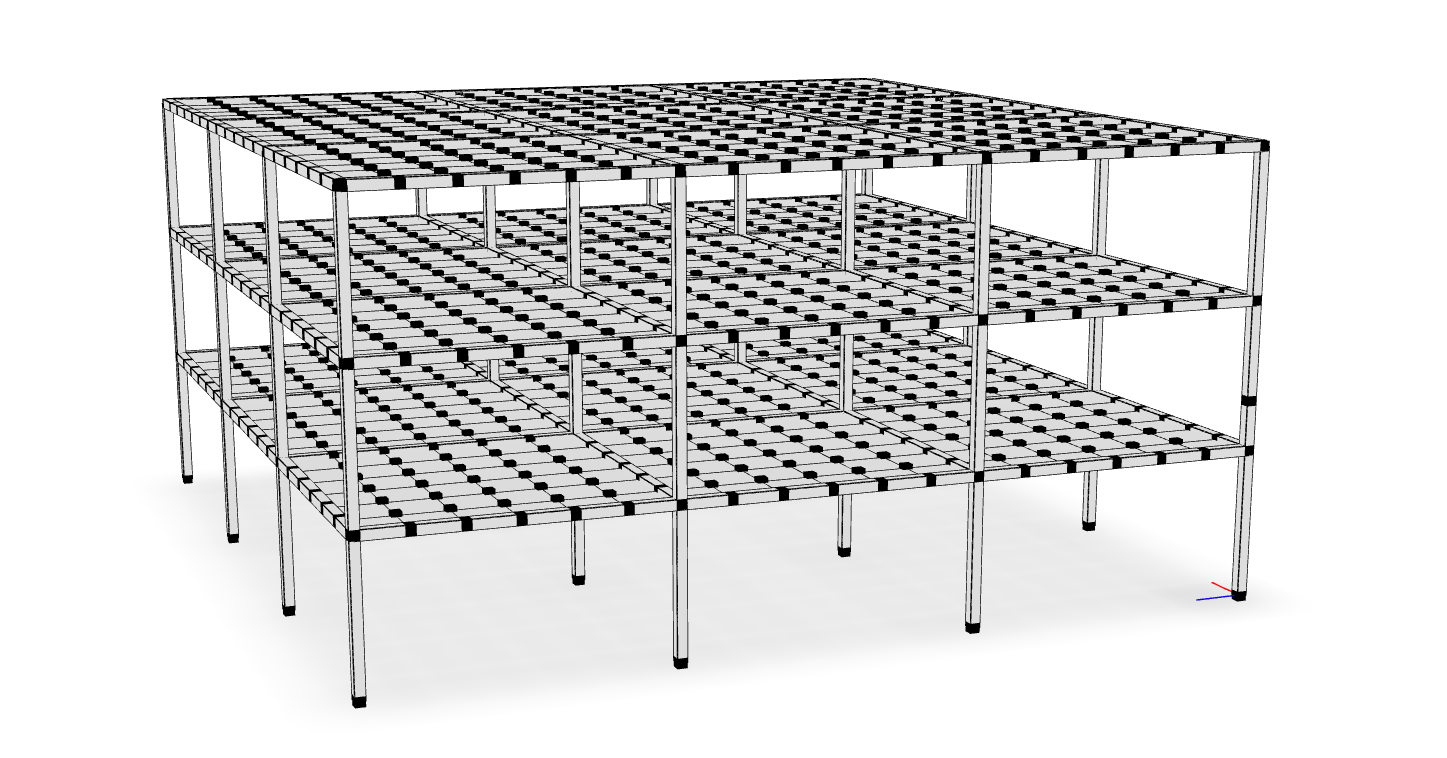sees

Highly efficient and portable finite element visualization framework
sees is a finite element rendering library that leverages modern
web technologies to produce sharable, efficient, and beautiful renderings.
Documentation is currently under development.
Features
-
Render frames with extruded cross sections
-
Detailed section rendering
-
A wide selection of rendering backends and output file types, including
optimized 3D web formats like .glb.
-
Correctly render models that treat both y or z as the
vertical coordinate.
Command Line Interface
To create a rendering, execute the following command from the anaconda prompt (after activating the appropriate environment):
python -m sees model.json -o model.html
where model.json is a JSON file generated from executing the following OpenSees command:
print -JSON model.json
If you omit the -o <file.html> portion, it will plot immediately in a new
window. You can also use a .png extension to save a static image file, as
opposed to the interactive html.
Note Printing depends on the JSON output of a model. Several materials and
elements in the OpenSeesPy and upstream OpenSees implementations do not
correctly print to JSON. For the most reliable results, use the
opensees package.
By default, the rendering treats the $y$ coordinate as vertical.
In order to manually control this behavior, pass the option
--vert 3 to render model $z$ vertically, or --vert 2 to render model $y$ vertically.
If the opensees package is installed,
you can directly render a Tcl script without first printing to JSON,
by just passing a Tcl script instead of the JSON file:
python -m sees model.tcl -o model.html
To plot an elevation (elev) plan (plan) or section (sect) view, run:
python -m sees model.json --view elev
and add -o <file.extension> as appropriate.
To see the help page run
python -m sees --help
Related Links
See also
The sees packages was used to generate figures for the following publications:
Support







